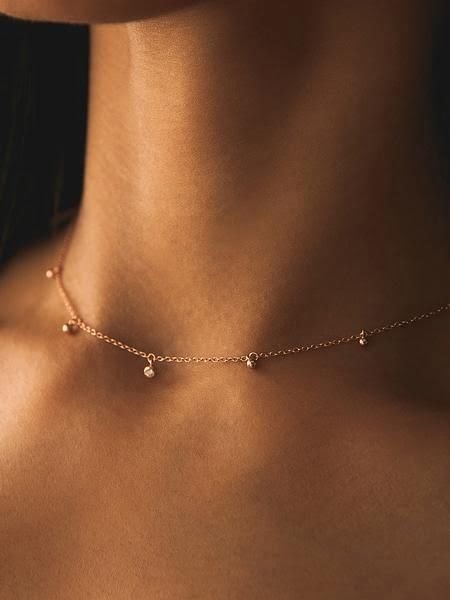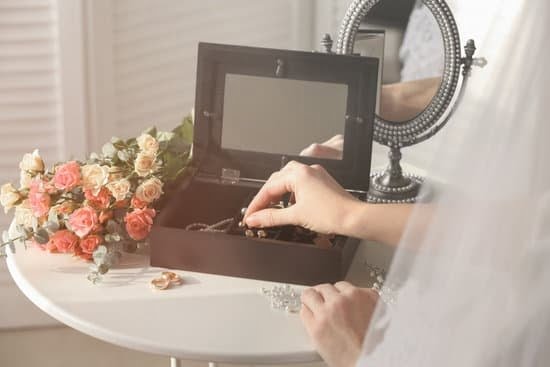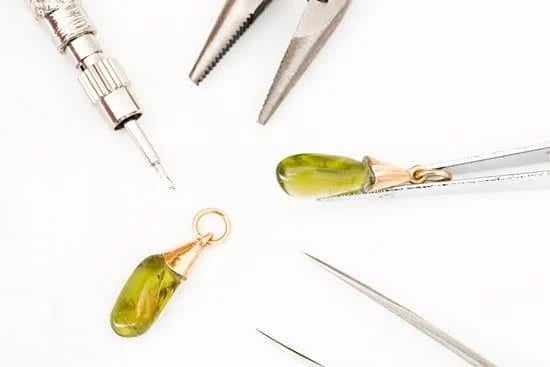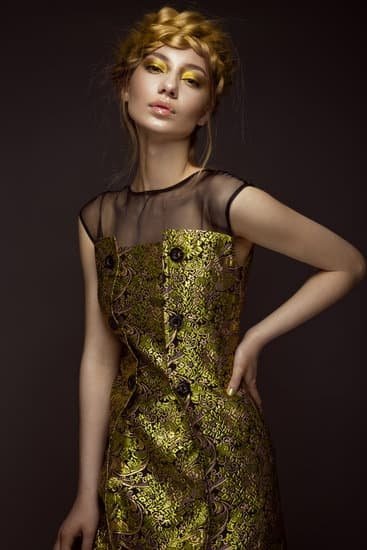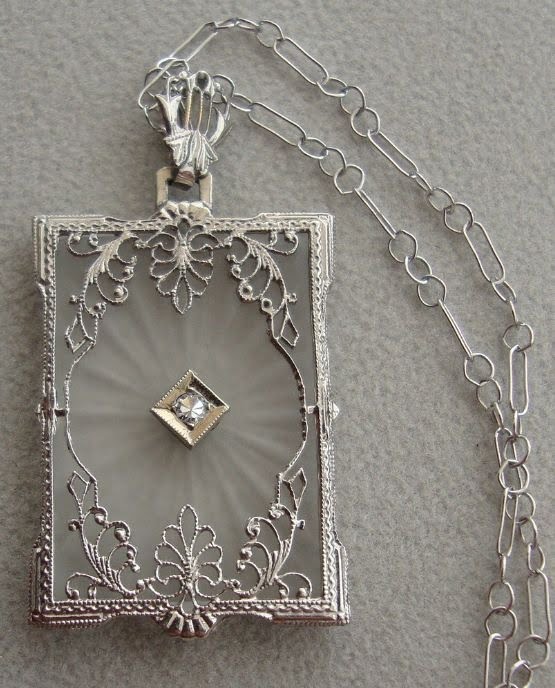Introduction
Broken jewelry art is an emerging form of art that involves repurposing and transforming broken jewelry pieces into something new. It has become increasingly popular in the last few years, with a growing number of people both making and appreciating the art form. On social media platforms, Instagram in particular, creators have united to share tips on how to create works from broken jewelry parts as well as showcase their creations for critique and appreciation.
This creative way of upcycling, in contrast to simply throwing out or buying all new materials, shows a strong degree of resourcefulness and ingenuity that resonates with many individuals. During these times of environmental consciousness, this art form stands as an example of our abilities to be creative when it comes to sustainability. Not only does it reduce waste but its presence within society opens up conversations about materialism and the fragility – both literal and figurative – associated with its use within fashion, beauty standards and trends. These topics can often motivate individuals unlike conventional discourse around sustainability that always centers policy makers and governments rather than everyday people or local communities.
Broken jewelry art further draws attention to the large amounts of waster created by wasteful practices like fast fashion which seek monetary gain while disregarding its effects on the environment (landfill growth). This is particularly relevant if you look at countries such as Bangladesh where their rivers are greatly polluted due to unregulated dumping by garment factories. Ultimately, bruken jewelry art serves not just as a reminder that we should be more mindful about our consumption habits but also inspires people to remain creative even during times when resources might seem limited at first glance — showing them what can be achieved with a bit of resourcefulness and determination.
Historical Context
18th Century: During the 18th century, European jewelers began a practice of intentionally breaking down and reshaping jewelry. This was seen as a way to repurpose jewelry in an artistic, creative way.
19th Century: As the 19th century progressed, broken jewelry art became more widely accepted and even associated with high society. Broken pieces were often shaped into intricate, colorful designs such as diamonds and roses.
Early 20th Century: The early 1900s brought a new wave of creativity to broken jewelry art. Craftspeople began to experiment with incorporating different materials such as glass beads and metal wire into their pieces. In addition, the popularity of this type of jewelry intensified in the 1920s amongst flappers who often wore accessories made from broken watch faces and necklaces made from pieces of antique jewelry.
Mid 20th Century: In the 1940s, some jewelers started adding functionality to their pieces by constructing unique mechanics for rings using broken parts such as clockworks and tiny cogs. By the 1950s more craftsmen had shifted away from traditional designs to focus on creating abstract sculptures out of reused and recycled materials. This marked an important milestone in the evolution of broken jewelry art.
Late 20th Century & Beyond: The late twentieth century saw a massive surge in creativity among young craftspeople who used found objects like bottle caps, buttons and hardware to create innovative statement pieces that could be sold in galleries or worn around town. Even today, broken jewelry has become incredibly popular due to its various combinations of beauty, history, function and sustainability that speaks not only to fashion lovers but also environmentalists alike.
Ideas to Start Your Projects
1. String and Clip Art: To make String and Clip Art with broken jewelry, take a string and thread it through the broken pieces. Then, clip the jewelry onto the string at various points to create a unique pattern. Add beads or other small items to complete your creation.
2. Mosaic Jewelry: Create a unique mosaic design with broken jewelry pieces. Place the individual pieces on a flat surface in your desired pattern and secure them using adhesive glue. You can also use grout for more of an authentic look and durability.
3. Necklace Art: This project is perfect for those who want to repurpose their old necklaces without taking away from its original meaning or aesthetic appeal. Start by removing any gemstones, chains, or charms that are still intact from the necklaces and divide them into categories according to color/shade and material type (i.e. gold, silver, etc.). Select one piece from each category as your primary component then combine different sections of each necklace until you have created something that reflects you own personal style––a beautiful combination of past and present!
4. Pendant Collage: For a pendant collage, take two or more broken pendants or charms, cluster them together on an acrylic sheet, then attach findings for securing clasps or wires so you can hang them up when done! This project is great for adding a pop of color to any room or as an accent in your garden décor!
5. Wall Decor: Take leftover necklace elements such as chain links and mounts holding stones together, creating colorful images against plain backgrounds on canvas frames that can be hung in living spaces––an interesting alternative approach elegant wall art you never thought possible!
An Inspirational Gallery
Broken jewelry art has become a popular and inspirational form of contemporary art that has recently made its way into the gallery scene. Famous artists like Damien Hirst, Cindy Sherman, and Shepard Fairey have produced amazing works of broken jewelry pieces. Each artist takes a unique approach to blending the beauty of precious metals, stones, and vintage trinkets while creating visually striking artwork.
Damien Hirst’s work is particularly noteworthy and uses his signature techniques to create abstract sculptures and wall pieces with disassembled pendants, bracelets, rings, and earrings. His masterpieces typically juxtapose different tones of steel and silver in organic shapes that echo nature to create stunning pieces.
Cindy Sherman’s modern jewellery creations use celebrated materials such as pearls and gold-plated metal components to craft personalized necklaces inspired by cubism. She combines distinct elements from multiple original pieces to make innovative wearable artwork dedicated with her own artistic style.
Finally, Shepard Fairey is another well-known figure in the broken jewelry art space who incorporates found objects into his iconic collages for an interesting mix between painting and sculpture. He often uses antique brooches or chandelier crystals to add texture and vibrance to his patchworks for a truly one-of-a-kind experience.
DIY Tutorial
Broken jewelry art has become increasingly popular in recent years. Whether making an insert necklace or creating a mosaic wall piece, the results can be quite stunning! Nevertheless, many DIYers often underestimate how difficult it is to make broken jewelry art. Thankfully, this guide will provide you with all the information that you need to achieve incredible results with your projects.
First and foremost, it’s important to understand the types of materials that you’ll need for broken jewelry art. Most notably, broken jewelry should be used for the base pieces; however, other supplies such as craft glue and sealant may also be required to ensure longevity and durability. When sourcing broken jewelry pieces, keep in mind that gemstones and colored stones can bring an extra layer of sophistication to your project.
Next, there are several techniques for putting together your artwork. For example, some people prefer to adhere each piece separately with craft glue whereas others might use heat or even pressure to make sure that it adds stability over time. Additionally, individuals may drill holes into the various pieces of jewelry if they’d like additional points of attachment during assembly. As mentioned earlier, ensuring that each piece has been properly sealed (even prior to assembly) will further extend the life of your project.
Finally, it’s important to remember that creativity is key when attempting any DIY projects! Experiment with different colors and shapes while using adhesives or specialty tools – think outside the box and have fun! Above all else, never forget how incredibly rewarding it is working on something with your own two hands – just don’t forget about safety either 😉
Tools and Techniques
Broken jewelry art has become increasingly popular in recent years as a creative way to repurpose old and damaged pieces of jewelry, transforming them into one-of-a-kind masterpieces. Crafting broken jewelry art requires several tools and techniques, from the simplest to more advanced. Here are some practical tips on how to do it.
One key tool in creating beautiful broken jewelry art is pliers. Needle-nose pliers are especially useful for poking, prodding, bending and turning delicate materials like wire, metal and soldering compounds. A lighter or torch may also prove helpful for refining shapes at higher temperatures.
It’s important to understand the basics of welding in order to pair elements with precision. A good primer on basic welding can be found online or there are books geared toward welders of all levels. Having a few spare tools handy like files or grinder sands paper are also essential when crafting broken jewelry art – they help even out surfaces, clean up lines and create unique textures and forms you can use to combine intricate pieces together in harmony.
Coloring your broken jewelry art is another step that can add a unique touch to your creations; dyeing materials with permanent marker pens then sealing them will add even more of a personal touch to the finished product. There are various options when it comes to tapping into color options that work best for the project: crayons, paints and other material used for coloring can all make an impact on each piece’s visual appeal. Lastly, don’t forget about glue: it’s instrumental when assembling beautiful works of art from broken pieces!
Building a Community Around Broken Jewelry Art
Creating an online creative forum that revolves around broken jewelry art is a great way to bring a community together. To get started, the first thing to consider is setting up a website or a social media presence. Once you have established your online presence, you should start engaging customers and create conversations with them. You can share photos of repair jobs you’ve done, show off new jewelry ideas, ask customers what types of projects they are interested in seeing, or simply provide advice on repairing broken jewelry pieces. Additionally, you can use this platform as an opportunity to showcase your work as well as offer tutorials and lessons for anyone who is just getting started in the craft. As your following starts to grow, you can begin holding monthly meetups or workshops where you teach people how to make their own unique creations from upcycled materials like broken jewelry pieces. This could also be used as an opportunity to host competitions and encourage creativity among those involved. Finally, it’s important to recognize members of the group for their achievements by awarding featured posts or providing discounts and other rewards on purchases from your store. With this type of approach you will quickly cultivate a thriving creative community around broken jewelry art that everyone will look forward to being part of!
Discussions and Critiques
When it comes to providing critique on broken jewelry art pieces, there are some general do’s and don’ts that one should observe. The most important do is to be polite, honest and constructive when offering an opinion or insight about the piece. It is crucial to point out any issues without being overly negative or combative. At the same time, demonstrating respect for the artist by appreciating their style and creativity can provide affirmation of their work.
Another important do is to suggest ways in which the jewelry art can be improved with guidance on specific techniques or tips on how alternative materials could be used. For example, if the artist has used a certain type of metal that caused discoloration or tarnishing during the creation process, it may be beneficial to offer alternative ideas such as utilizing solder or soldering paste for future projects. Lastly, it is courteous to focus your critique on things that can be changed rather than dwelling on what cannot be altered.
When offering critiques, it should always be remembered not to criticize another person’s work harshly or make offensive comments about the final product. These kinds of personal attacks are never acceptable in any setting no matter how much you disagree with them or how passionate you feel about a subject. Additionally, refrain from comparing another artist’s broken jewelry art pieces with your own; everyone has their own unique style of expression and comparison does not support this idea in any way. Ultimately, whenever offering comments on someone else’s art take into consideration that your words and actions have power – use it wisely!
Art Appreciation
Broken jewelry art is a creative and fascinating practice for those who want to repurpose unused, damaged, or discarded items into attractive and pleasing works of art. Though it can be tricky to make something beautiful from unwanted pieces, the pay-off can be tremendous. And learning how to appreciate other peoples’ broken jewelry art creations can help one become a better artist in their own right.
When giving constructive reviews and encouragement to other artists in the field of broken jewelry art, it is important to find an emotional balance between criticism and kindness. Sharing your own honest opinions about their work without alienating their feelings can be difficult but can also leave others feeling empowered by your thoughtful dialogue. Also, refrain from making quick judgments and instead look for underlying reasons why someone may have created a certain piece. Ask them questions relating to their design process and explain which features you think they did exceptionally well while recommending improvements that you believe might take it to the next level. Lastly, offer any guidance or resources you may have available so they feel supported throughout their journey. Doing this will build trust with fellow peers while fostering growth in the community at large.
Closing Remarks
Broken jewelry art is an incredibly unique and fascinating art form. It allows artists to craft fascinating pieces utilizing materials which they may have not considered before. The results are often stunning, visually interesting works of wearable art. Moreover, creating them is a cost-effective and sustainable form of creating one-of-a-kind jewelry as it requires no additional resources other than those that were already in the discarded jewelry pieces.
Reflecting on broken jewelry art, it is clear how skilled an artist must be to create these pieces sustainably and expertly. The ability to envision new forms from otherwise unusable material deserves recognition and praise. Anthropologically speaking, this process reflects the cycle of nature in which waste must be reused or repurposed in a meaningful way – the same can easily apply to human creations such as unwanted or broken jewelry.
Ways to support the art of broken jewelry art include shopping eco-consciously: buying thrifted or previously loved items or selecting pieces made from reclaimed materials; highlighting admirable creators on social networks; promoting awareness through event participation or by contributing efforts to promote ethical practices in the industry; providing monetary donations to organizations dedicated to supporting sustainability measures; and helping recycle your own broken jewelry into new treasures through DIY workshops or influence others positively by sharing inspiring stories.

Welcome to my jewelry blog! My name is Sarah and I am the owner of this blog.
I love making jewelry and sharing my creations with others.
So whether you’re someone who loves wearing jewelry yourself or simply enjoys learning about it, be sure to check out my blog for insightful posts on everything related to this exciting topic!

